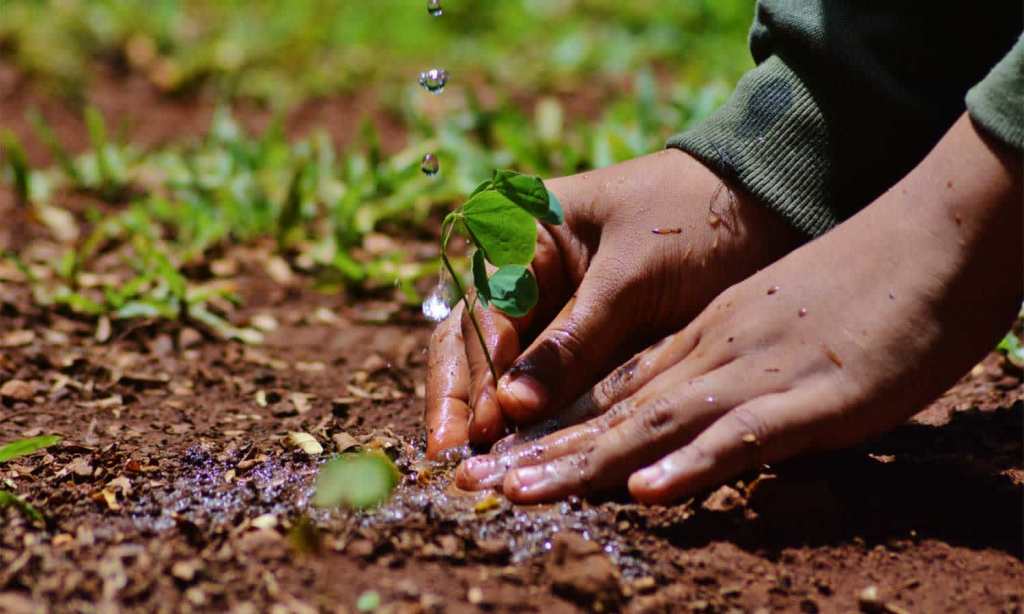Planting trees is something most Aussie kids do in primary school, but do any of us really know exactly how it contributes positively to climate change? Allow us to explain.
Around the world, governments have committed to tree-planting exercises in the trillions. In Australia, 25 million trees will be planted across the country in the next five years to combat the devastation of the 2020 bushfires that robbed the country of 25% of its natural forests.
According to NASA, “Forests are considered one of the world’s largest banks for all of the carbon emitted into the atmosphere . . . [and] cover about 30% of Earth’s land surface.” What exactly makes up a forest? Well, it is a complex ecological network where trees are the main living organisms.
Trees are integral to our ecosystem. They provide us with oxygen, and shade from the sun, and automatically transform any area into a lush and welcoming abode. Here’s what else these gentle giants do for the environment.
Trees Reduce Greenhouse Gases
Trees are our planet’s lungs. They reduce greenhouse gases when they take in carbon dioxide from the atmosphere and store it as organic materials in the form of deadwood, leaf litter, and in the soil. This process is known as carbon sequestering; where trees convert carbon dioxide into biomass during photosynthesis. This is a paramount feature of trees that keep the balance of gases in our atmosphere.
Trees Are Natural Air Fresheners
Think back to the last time you walked under a canopy of trees. Do you remember the cool breeze and the dip in temperature? With the onset of global warming, global temperatures are estimated to rise each year.
The only natural solution to this heat is growing trees — because trees are able to reduce temperatures by transpiring (giving off water vapour) and providing shade. Tree leaves also have a key function in digesting pollutants in the atmosphere.
Apart from carbon dioxide, trees are also able to filter atmospheric pollutants like sulphur dioxide and nitrogen dioxide through their leaves. Trees control how gases enter their leaves by opening and closing pores on their stomata, on the underside of their leaves. After taking in these gases, they ‘self-medicate’ by producing an enzyme that breaks down the pollutant so it doesn’t poison the plant.
Many of these particles are usually invisible to the human eye and are by-products of factories and construction sites. These are inevitable consequences of urban environments that focus heavily on development without thought for the environmental consequences.
Trees are Home to Animals
Eight in 10 animal species found on land live in forests, making trees some of the most habitable shelters for the animal kingdom.
In Australia, the gum tree (eucalyptus) is home to some of our most iconic animals — the koala! Trees are also commonly home to the tree kangaroo, orangutan, elephants, pandas, and antelope families. They provide animals with food, shelter, and a space to hide from predators.
Deforestation often strips these animals of their home and, in turn, destroys the natural biodiversity of the areas. Imagine an empty forest, there would be no birds, no chimps, and no mammals. It would be barren of life.
Trees Protect Water
It’s a little-known fact that tree leaves have a critical role in water storage and management. Just like the filter on your tap, a tree characteristically holds and cleans water from rainfall.
In America, a forestry study found that a single tree intercepts an average 1,685 gallons (7,660 litres) of rainwater each year. If not for the tree, all that water would fall to the ground, and much of it would become runoff. Instead, the tree captures, stores and uses it.
Trees help urban systems with floods and stormwater runoffs by absorbing rainwater and storing it in their root systems. During this process, trees are able to break down the harmful particles sometimes found in rain, like phosphorus pollutants and nitrogen, and prevent the water from polluting rivers and oceans.
Trees Are Our Natural Best Friends
For anyone who loves walking or hiking, the magic and allure of a forest are unmistakable. Although trees have an inherently powerful part to play in climate change, they have a transformative impact on anyone who frequents the forest.
Scientists call it Biophilia Hypothesis, which suggests that humans possess an innate tendency to seek connections with nature. In Japan, forest bathing or Shinrin Yoku, is an ancient practice from the 1800s that describes the psychological experience of making contact with and taking in the atmosphere of the forest.
These two terms have an overlapping focus on the function of the forest as a healer. Even though trees have a critical part to play in climate change, they have a critical part to play in our awareness of the climate in the first place.
Next time you, or someone you know, takes part in a tree planting activity, remember the part you’re playing to fight climate change, one root at a time.
Read more stories from The Latch and subscribe to our email newsletter.

